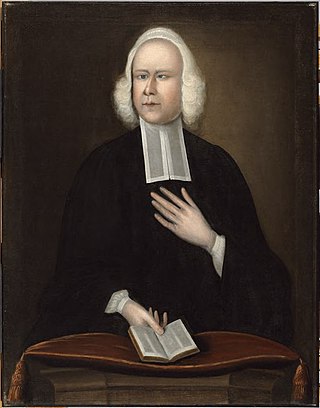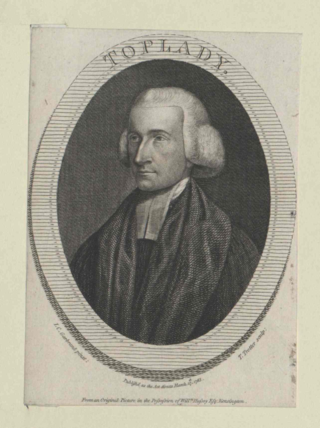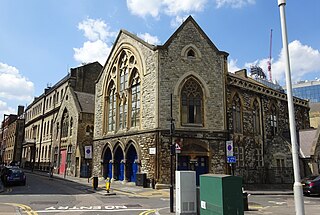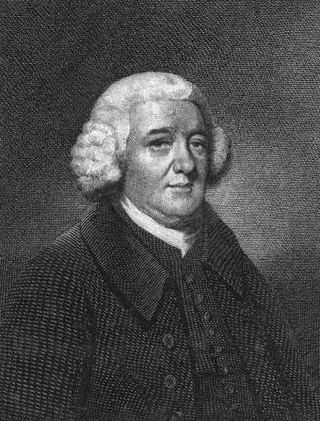
George Whitefield, also known as George Whitfield, was an Anglican cleric and evangelist who was one of the founders of Methodism and the evangelical movement.

John Wesley was an English cleric, theologian, and evangelist who was a leader of a revival movement within the Church of England known as Methodism. The societies he founded became the dominant form of the independent Methodist movement that continues to this day.

Tottenham Court Road is a major road in Central London, almost entirely within the London Borough of Camden.

Augustus Montague Toplady was an Anglican cleric and hymn writer. He was a major Calvinist opponent of John Wesley. He is best remembered as the author of the hymn "Rock of Ages". Three of his other hymns – "A Debtor to Mercy Alone", "Deathless Principle, Arise" and "Object of My First Desire" – are still occasionally sung today.

"Love Divine, All Loves Excelling" is a Christian hymn by Charles Wesley on Christian perfection. Judging by general repute, it is among Wesley's finest: "justly famous and beloved, better known than almost any other hymn of Charles Wesley." Judging by its distribution, it is also among his most successful: by the end of the 19th century, it is found in 15 of the 17 hymn books consulted by the authors of Lyric Studies. On a larger scale, it is found almost universally in general collections of the past century, including not only Methodist and Anglican hymn books and commercial and ecumenical collections, but also hymnals published by Reformed, Presbyterian, Baptist, Brethren, Seventh-day Adventist, Lutheran, Congregationalist, Pentecostal, and Roman Catholic traditions, among others including the Churches of Christ. Specifically, it appears in 1,328 of the North American hymnals indexed by the online Dictionary of North American Hymnology, comparable to Newton's "Amazing Grace" (1,036), Wesley's "O for a Thousand Tongues" (1,249), and Watts' "When I Survey the Wondrous Cross" (1,483), though still well short of Toplady's "Rock of Ages" (2,139) or Wesley's own "Jesu, Lover of my Soul" (2,164).

Olaudah Equiano, known for most of his life as Gustavus Vassa, was a writer and abolitionist. According to his memoir, he was from the village of Essaka in modern southern Nigeria. Enslaved as a child in West Africa, he was shipped to the Caribbean and sold to a Royal Navy officer. He was sold twice more before purchasing his freedom in 1766.
Whitefield's Tabernacle is the name of several churches associated with George Whitefield, including:

Whitefield's Tabernacle, Moorfields is a former church at the corner of Tabernacle Street and Leonard Street, Moorfields, London, England. The first church on the site was a wooden building erected by followers of the evangelical preacher George Whitefield in 1741. This was replaced by a brick building in 1753. Following Whitefield's death in 1770, John Wesley preached a sermon, "On the death of the Rev. Mr George Whitefield", both here and at Whitefield's Tabernacle, Tottenham Court Road.

Whitefield's sometimes Whitfield's Tabernacle is a former Calvinistic Methodist and Congregational church in Kingswood, a town on the eastern edge of Bristol where George Whitefield preached in the open air to coal miners. The name refers to two buildings in which the congregation met.

Joanna Vassa was the only surviving child of the former slave and anti-slavery campaigner Olaudah Equiano. Her grave in Abney Park Cemetery, London, was given listed status in 2008 but little is known of her life.

Selina Hastings, Countess of Huntingdon was an English religious leader who played a prominent part in the religious revival of the 18th century and the Methodist movement in England and Wales. She founded an evangelical branch in England and Sierra Leone, known as the Countess of Huntingdon's Connexion.

Charles Silvester Horne was a Congregational minister, who additionally served as Liberal MP for Ipswich, and was a noted orator. He was the father of Kenneth Horne.
Robert Hindmarsh (1759–1835) was an English printer and one of the original founders of Swedenborgianism.

John Hyatt was an English nonconformist pastor and missionary. He found Wesleyan theology as a young man and went on to become a much loved and revered driving force of early Methodism in London, becoming influential in continuing the First Great Awakening started by George Whitefield in the 1740s. Hyatt preached regularly in the slums of Hackney in London's East End. He gained a large following and was always in demand for his sermons, which were greatly influenced by those of John Wesley and George Whitefield.

John Tarring FRIBA (1806–1875) was an English Victorian ecclesiastical architect active in the mid-nineteenth century. Based in London, he designed many Gothic Revival churches for Nonconformist clients.
The year 1756 in architecture involved some significant events.

Samuel Medley (1738–1799) was an English Baptist minister and hymn-writer.

Richard Conyers (1725–1786) was an English evangelical cleric, and the hymn-book compiler of a precursor to the Olney Hymns. He became well known as the parish priest of Helmsley in the North Yorkshire Moors, a cure of scattered villages.
Rev. Henry Foster (c.1743-1814) was an evangelical clergyman who played a significant part in the religious revival of the late eighteenth century.
This is a list of the sermons of John Wesley, founder of Methodism. The first four volumes of Wesley's sermons include 44 discourses that are of special significance, while later volumes are also studied by Methodists for their doctrinal and moral teachings.
















